MARIANI’SVirtual
Gourmet
September 23,
2012
NEWSLETTER
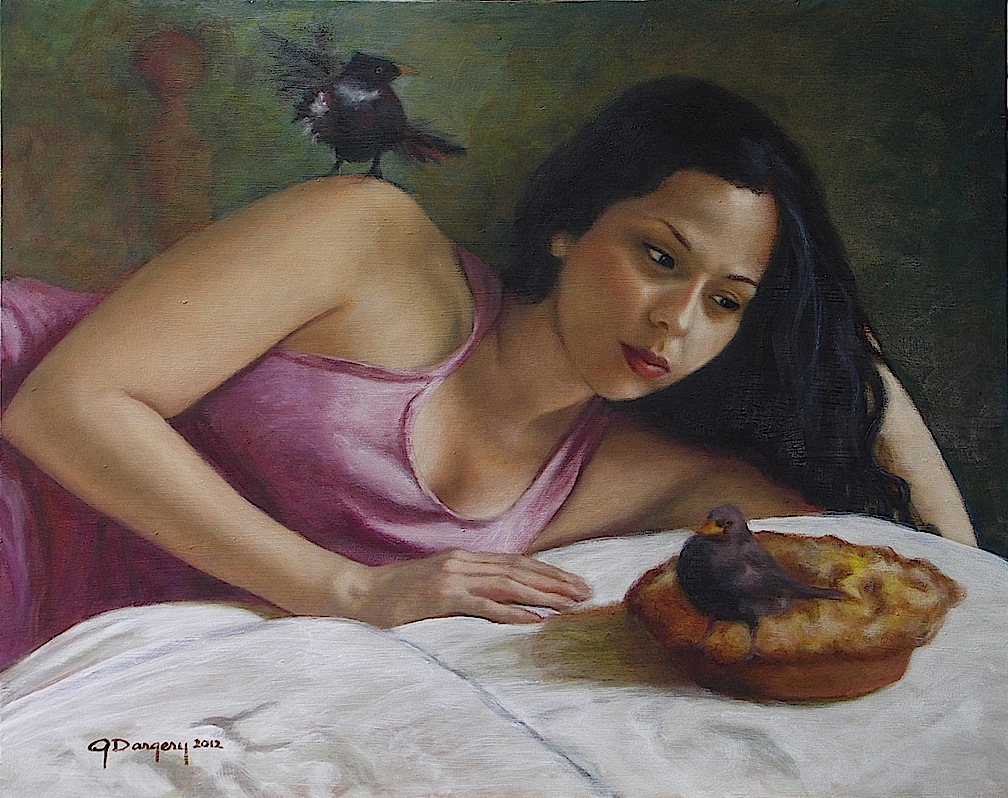
LA BELLA BOLOGNA
by John Mariani
NEW YORK
CORNER: London
Lennie's by
John Mariani
by John Mariani
❖❖❖
by John Mariani
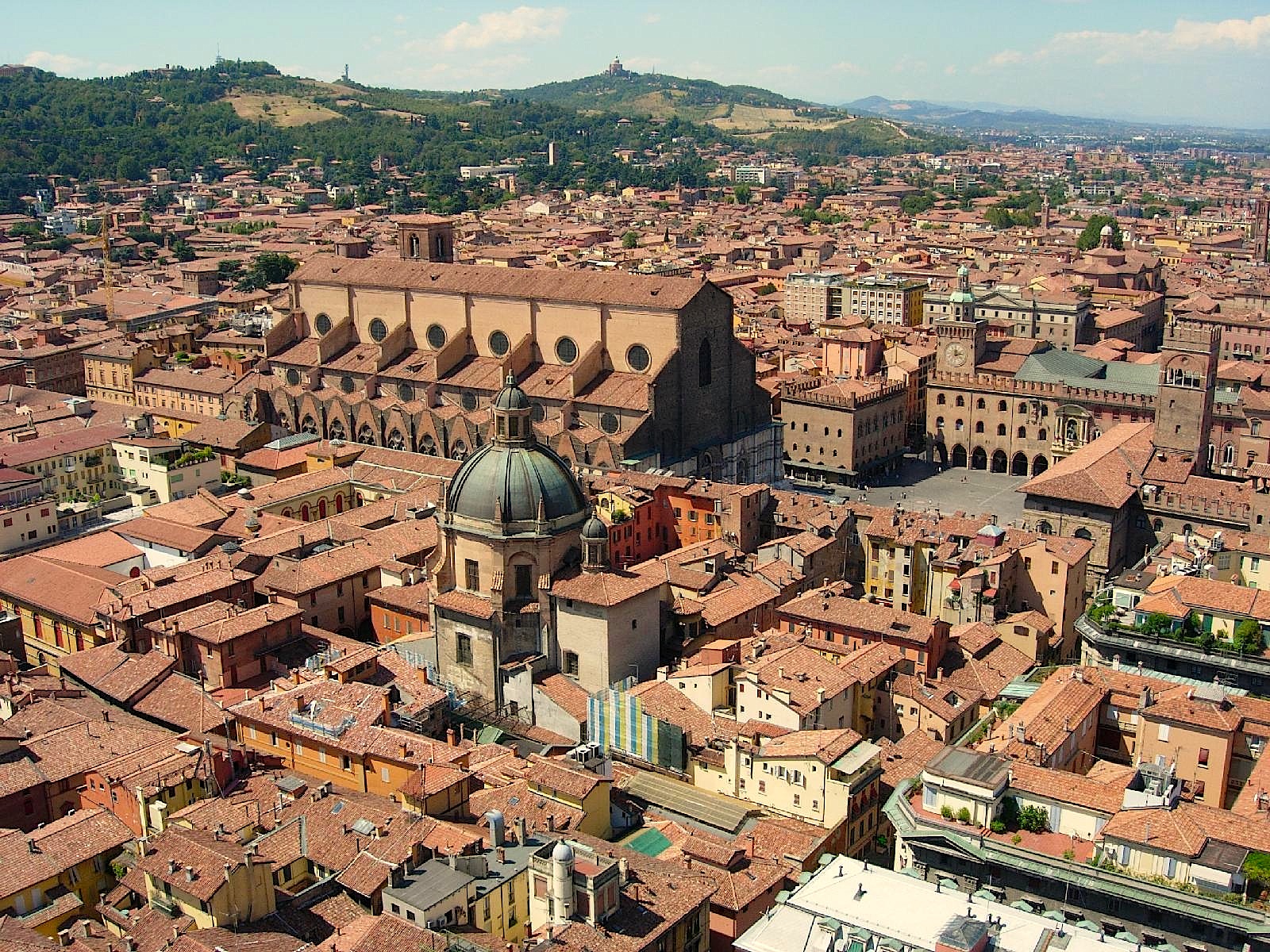
Which is not to say Bologna is bereft of
international travelers, but they are there as much
for business as for pleasure, and the city has a rich
panoply of excellent hotels, including the Grand
Hotel Majestic “Giá Baglioni” right in
the city center, where I stayed.  Its lobby and
reception hall is expansive, larger than most in
Italian deluxe properties, and my room (right)
sumptuously decorated and wonderfully quiet
(until a street performer decided to settle in for the
afternoon on the Via Indipendenza). I wanted to
throw pear at him from my window but the pear
was too good for that.
Its lobby and
reception hall is expansive, larger than most in
Italian deluxe properties, and my room (right)
sumptuously decorated and wonderfully quiet
(until a street performer decided to settle in for the
afternoon on the Via Indipendenza). I wanted to
throw pear at him from my window but the pear
was too good for that.
There is a state-of-the-art spa,
and the hotel also has one of Bologna’s finest and
loveliest restaurants, i Carracci, of which I shall
say more next week. And there may well be no finer,
more genteel hotel general manager than Tiberio
Biondi, who goes out of his way to greet and make
guests happy, backed by a highly professional staff
who are well aware they work in a deluxe property for
a well-traveled clientele with high expectations.
Bologna is an ancient Italian city, dating back
3,000 years, with a rich history that includes the
oldest university in the world, founded in 1088. There is a
great deal of beautifully preserved medieval
architecture, centered around the Piazza Maggiore (left), and a
smattering of later styles; the city’s 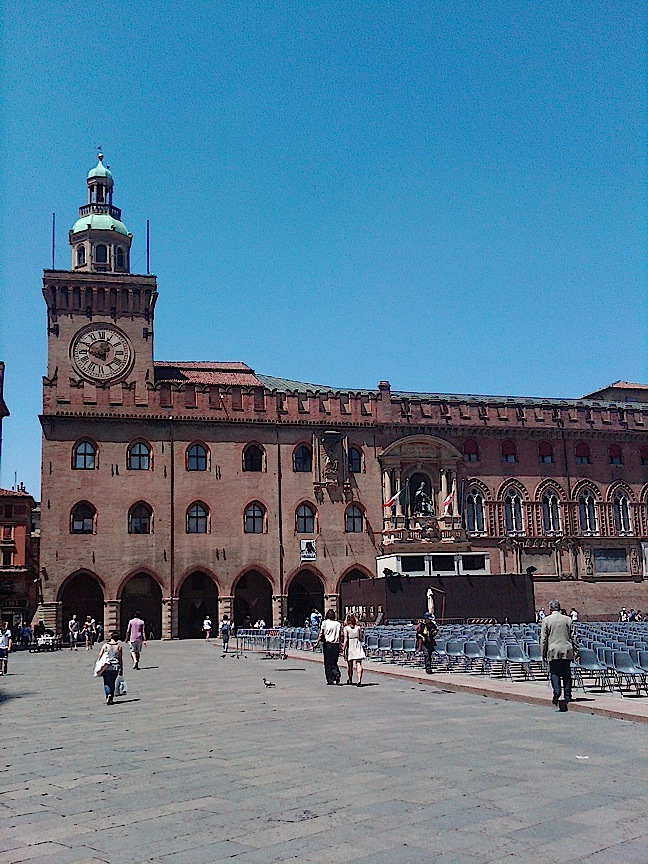 walls sre still evident and its many
towers and archways give Bologna a vertical and
horizontal balance.
walls sre still evident and its many
towers and archways give Bologna a vertical and
horizontal balance.
Like all
Italian cities, Bologna has had its good, bad, and
horrific times, but currently, as the capital of
Emilia Romagna, with a good industrial base, the city
is as prosperous as it looks, but the Bolognesi do not
show it off; they are not ostentatious; they do not
flaunt their affluence.
It is a city far more proud of its intellectual
and educational heritage and of food so delicious and
famous throughout Italy that the city has long been
called “La Grassa,” the fat one. I shall be
saying more about Bologna’s gustatory splendor in next
week’s newsletter, but for the moment let me mention
that Emilia Romagna is home to Parmigiano-Reggiano, mascarpone, mortadella,
cotechino, grana padana, Prosciutto di Parma,
tortellini,
tagliatelle, and, of course, lasagne all bolognese.
Florentine fabulist
Giovanni Boccaccio tells a story in his Decameron
(1353) of a land where there is a mountain made out
of Parmigiano cheese on which people do nothing all
day but eat macaroni; I'm sure he meant Emilia
Romagna. I have recently
written about its principal wine,
Lambrusco, which has a wholly undeserved
reputation for being sweet, fizzy plonk.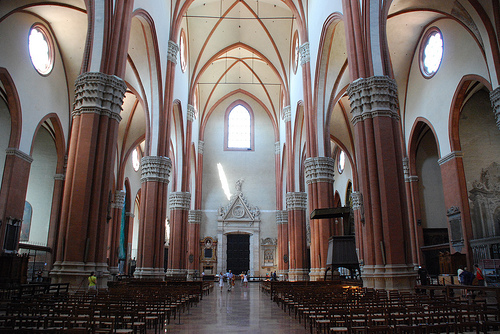
Of the scores of churches that dot Bologna,
requisite visits include the vast San Petronio
Basilica (right),
begun in 1390 in the Gothic style of pink and white
marble, with 22 chapels within. The Bologna Cathedral,
while not as large as San Petronio, is, in the
ecclesiastical sense, more important. Begun in 1028,
it burned down in 1141 and was rebuilt, with additions
along the centuries, with a new façade added in
1747. The
Bolognesi themselves favor the medieval architecture
of San Petronio to the Baroque style of the Cathedral,
which they find ostentatious. There is also
the somber, cloistered St. Stephen Basilica, the
deliberately plain Basilica of Saint Mary, founded as
a church for the Servite Community, and the late
Romanesque San Giacomo Maggiore, established by a
community of hermits in 1247.
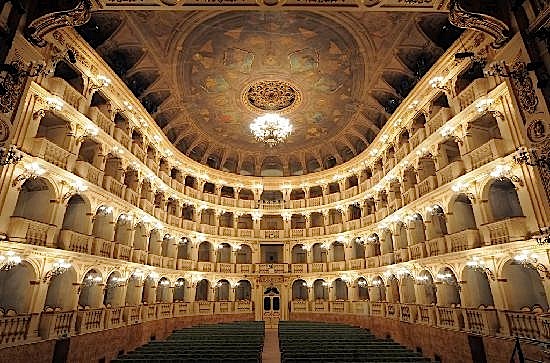 Given its long history of
devotion to the musical arts, Bologna initiated the
project "Bologna dei Teatri" in 1998, a circuit of
theaters offering cultural and theatrical events from
the folkloric to the grand. The city’s opera house,
the Teatro Comunale di Bologna (left), is widely
renowned, and its own heritage includes native son,
conductor Arturo Toscanini.
Given its long history of
devotion to the musical arts, Bologna initiated the
project "Bologna dei Teatri" in 1998, a circuit of
theaters offering cultural and theatrical events from
the folkloric to the grand. The city’s opera house,
the Teatro Comunale di Bologna (left), is widely
renowned, and its own heritage includes native son,
conductor Arturo Toscanini.
The city has its formidable lists of famous
people from the arts and politics, sports and
industry, and a short one, with a nod to the Emilia
Romagna region, would include artists like Correggio,
Parmigianino, Reni, and
Morandi, opera singer Luciano Pavarotti, composer
Giuseppe Verdi, author Umberto Eco, race car
driver and entrepreneur Enzo Ferrari (whose superb new
Ferrari museum is in nearby Modena). The city
nearly corners the market on great Italian film
directors, claiming Michelangelo Antonioni and Federico Fellini (below) and
Bernardo Bertolucci as their own.
When I visited in June,
the weather was hotter  than usual for that time of
year, but Bologna is a northern city, so it doesn’t
get the constant searing heat of Rome, Naples, and
cities to the south.
I therefore walked and walked and walked, under
those shady arches and in the shadows thrown by the
towers and churches around the Piazza Maggiore and the
bronze Neptune Fountain. There are two colossal towers
in the Piazza di Porta Ravegnana.
than usual for that time of
year, but Bologna is a northern city, so it doesn’t
get the constant searing heat of Rome, Naples, and
cities to the south.
I therefore walked and walked and walked, under
those shady arches and in the shadows thrown by the
towers and churches around the Piazza Maggiore and the
bronze Neptune Fountain. There are two colossal towers
in the Piazza di Porta Ravegnana.
Unfortunately, as too often is the case in
Italy, important monuments are closed for any number
of reasons at any time of day of the week, and this
was the case with the National Museum of Art, which I
wanted to see for its Bolognese paintings, as well as
Perugino’s "Madonna in Glory" and Raphael’s "Ecstasy
of St. Cecilia." But those must be for another time.
Simply joining the throngs of Bolognesi who
usher from work to eat at their favorite trattorias
and ristoranti
and the students noshing on panini and salume is as much a part of the
city’s great charm as its monuments. For its
history, its size, and its tempo of life, civilization
has no more appealing showcase than Bologna.
For
tourist information about Bologna: www.bolognawelcome.com
Next week: In Search of the Perfect Lasagne
alla bolognese. . . and other Bologna delicacies.
❖❖❖
NEW YORK CORNER
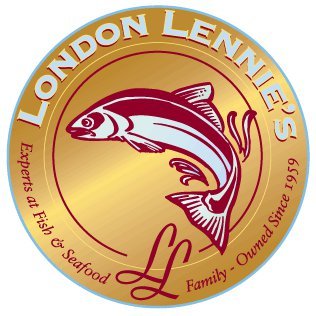
63-88
Woodhaven Boulevard
Rego Park, NY
718-894-8084
www.londonlennies.com
To
call London Lennie's delightfully old-fashioned is
meant as high praise, especially since this year the
place celebrates 50 years in business, with no signs
of slowing down. Indeed, LL (I shall call it) is
booming most nights of the week, and weekends are
packed, from its seafood counter to its well-set
tables in an ambiance that might be considered
American seafood house classic: polished wood, fine
art prints, glowing sconces. It’s just
such a joy to be within that kind of warmth, added to
by a well-trained service staff.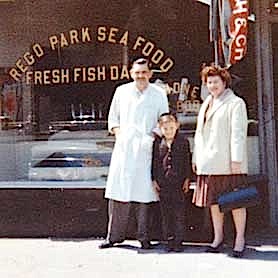
Owned and operated
by the Barnes Family (right) since 1959, London Lennie’s
was founded by Leonard “Lennie” Barnes and his wife
Joan Barnes after emigrating from London. Lennie was
well respected in the seafood markets, heading down to
the Fulton Fish Market before dawn, paying extra to
get the best, and now his son Leslie--the little boy
in the photo--is carrying on the tradition, built on
five decades of knowing everyone in the seafood
business.
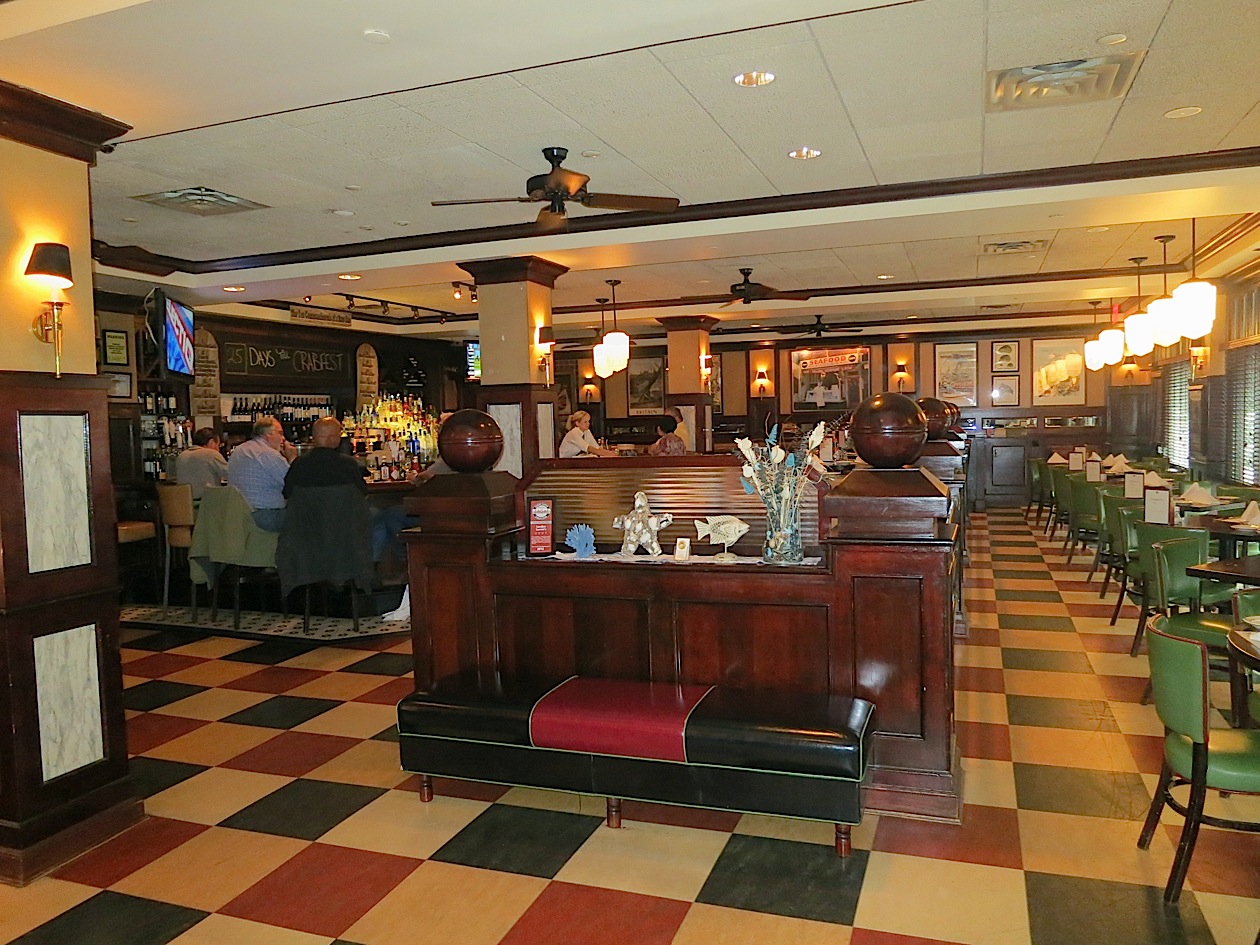 In fact, just sitting down with
him for a half hour, I learned more about seafood—what
to look for, when to buy, what never to buy, and what
retail prices mean--than I could imagine. From now
on, if I have a question about seafood, I’m calling
Leslie. I could
tell immediately how hard he works at what he does,
and his legacy drives him that way to be the best. LL's
mantra, “It won’t make it to your table if it doesn’t
meet our high standards.”
In fact, just sitting down with
him for a half hour, I learned more about seafood—what
to look for, when to buy, what never to buy, and what
retail prices mean--than I could imagine. From now
on, if I have a question about seafood, I’m calling
Leslie. I could
tell immediately how hard he works at what he does,
and his legacy drives him that way to be the best. LL's
mantra, “It won’t make it to your table if it doesn’t
meet our high standards.”
I happened to be there to meet wine importer
and writer Gerry Dawes, who promised me LL would be
worth the drive to Queens. He was certainly right
about the wine list, overseen by Brad Haskel, with
more than 200 labels, dozens of them 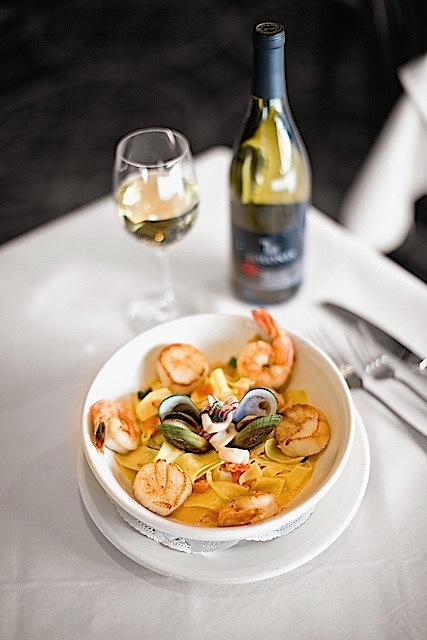 under $40 and
some fine whites under $25.
under $40 and
some fine whites under $25.
The menu is large, too,
but judiciously based on what’s best that day. So, if
you order the crabcakes as an entree (only $28), you
get crabmeat and nothing but crabmeat, with just
enough binder to keep it together, a fat cake, gently
sautéed.
Among the appetizers are, of course, raw bar
offerings and chilled shellfish towers at very
reasonable prices.
If they have Jonah crabs, grab for them. Then
there’s sushi and sashimi, not entirely surprising at
a place that puts so much emphasis on freshness. There
are a few pastas, like sautéed shrimp,
scallops, and clams in a light tomato sauce over
linguine (right).
Fried calamari will always be crisp and tender, and
the fish tacos are highly recommended, made with
grilled mahi and packed to its gills with pickled
onion, pico de
gallo, guacamole, and a spicy, hot
coconut-habanero sauce.
There is an array of salads—I liked the
generous chopped version—and then you turn over the
menu page to find all the market specials, including
five lobster offerings, with some of the critters
topping four pounds. The
fish can be ordered straightforward or with various
sauces—not LL’s strong point—and then there is a
section called “LL’s Classics,” which include
excellent fish and chips made with day-boat cod, which
makes quite a difference; sea scallops from New
Bedford; fried Ipswich clams; and a Downeast lobster
roll, truly stuffed, sided with crisp French fries.
I'm pretty sure Leslie could show you the fish's
birth certificates.
Frankly, I don't recall if I had dessert—I had
eaten my fill—which only gives me reason to go back
and be a little more temperate in my ordering. But when
seafood is this good—and frankly, seafood in this
country is rarely at this level—dessert gives me a
good reason to return.
London Lennie’s is open for lunch
Mon.-Fri, and for dinner nightly.
❖❖❖
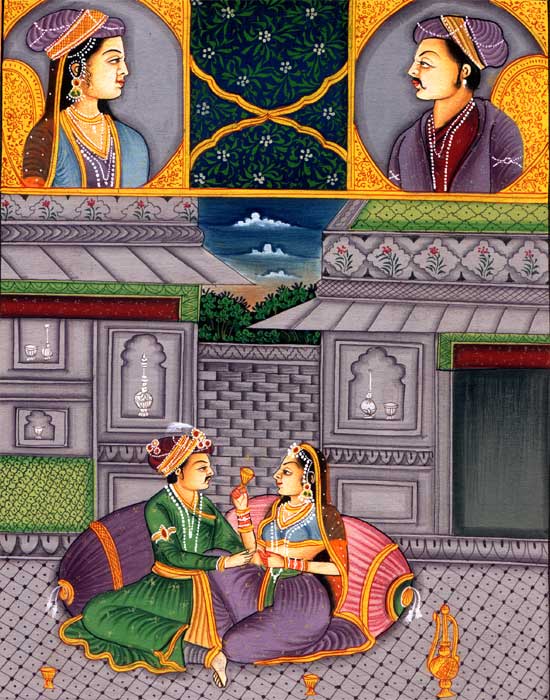 With Indian Food,
What Wines
With Indian Food,
What Wines
Can Take
the Heat?
by John
Mariani
Dr. Samuel Johnson once famously said, "Claret is the liquor for boys;
port for men; but he who aspires to be a hero must
drink brandy.” Unfortunately, he neglected to say
which one goes best with Indian food. Of course,
back in the 18th century,
London had no curry houses of the kind where in the
1960s I could pay one pound for a full meal with a
bottle of Kingfisher beer for 50 pence.
Years later, while visiting
India, I never met anyone who recommended anything but
beer or the yogurt drink lassi to go with the spicy, often
incendiary food of New Delhi, Mumbai, and Calcutta.
There were no wine lists in the restaurants, and,
although India has made wine for at east two
millennia, until recently, few Indians enjoyed it with
their meals. A
prohibition against wine in the 1950s hurt the
industry, which is only now recovering.
This myopia is now changing among
the more affluent generation India’s big cities, where
wine and alcohol are becoming very much a part of
dining out. “Even two years ago imported wines were
astronomically priced in India,” says Rohini Dey,
owner of two
Vermilion restaurants, Chicago and New York. “Today
Mumbai is more 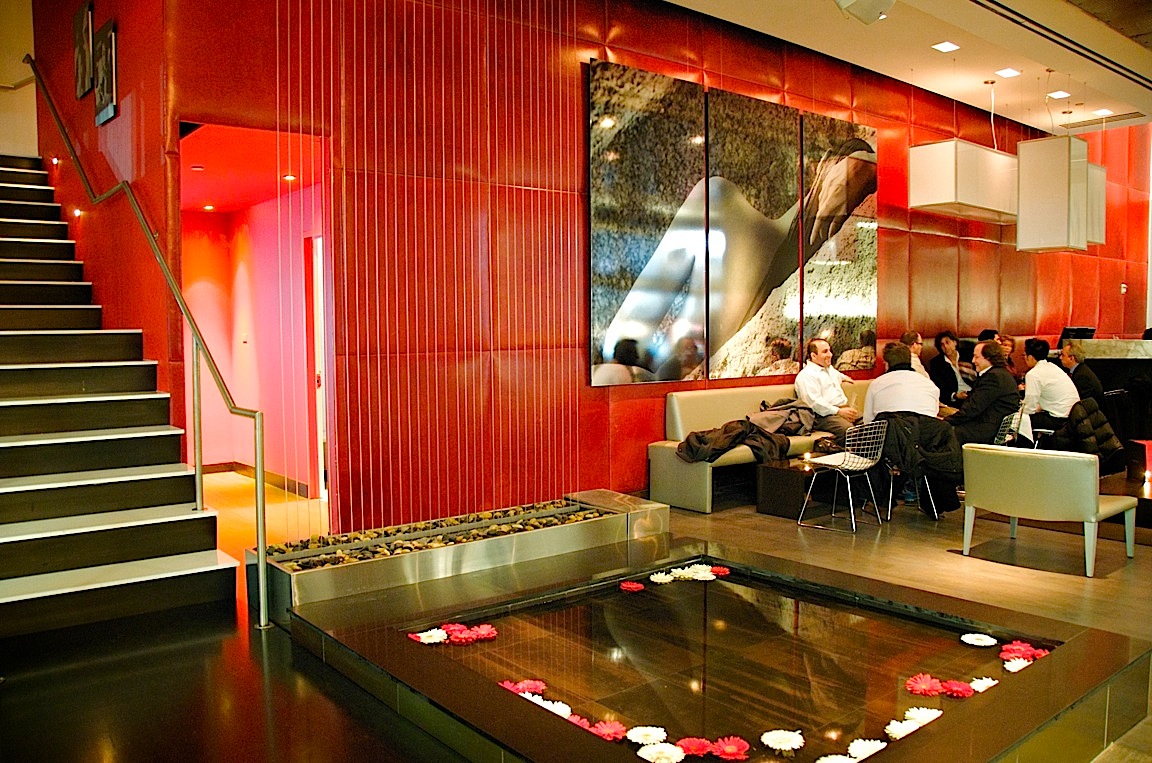 progressive than other
places, and they now have a pop culture, so the young
people with money want to try Old World and California
wines.”
progressive than other
places, and they now have a pop culture, so the young
people with money want to try Old World and California
wines.”
At New York’s Vermilion (right), the wine
list is global and very pricey: a humdrum 2010 Vie
Vite Rosé that sells in wine store for $15
costs a whopping $80 here, and a 2010 Nieto Malbec
from Argentina, $10 at retail, is $$48 on the list.
“My advice is to stay away from
high alcohol wines that will accentuate the burn of
the food,” said Dey, “and syrupy wines do a disservice
to our food. The best choices are wines with low
tannins and high acidity.”
I agree with Dey. The wines I found
went best with highly spiced dishes like duck vindaloo
with pomegranate molasses and pindi butter chicken
with a creamy tomato sauce were pleasant whites like
chenin blanc and a white Rioja whose minerals and
acidity did nothing to tamp down the fire but gave a
good fruity edge to the food.
 I also spoke
with Simon Stilwell (left),
one
of the rare sommeliers at an Indian restaurant in the
U.S., in this case the excellent new Rasika West End
in Washington, DC. He likes mineral-rich white
Burgundies with rich, creamy dishes like the
cheese-based paneer makhani. As for food cooked in the fierce
tandoor oven, Stilwell says, “The high
temperature and slight char effect on the food are
similar to the results from grilling, like dishes from
coastal Spain, where a lot of fish is grilled or
Argentina, where they grill so much meat. So, the
wines from those countries are well worth
investigating.”
I also spoke
with Simon Stilwell (left),
one
of the rare sommeliers at an Indian restaurant in the
U.S., in this case the excellent new Rasika West End
in Washington, DC. He likes mineral-rich white
Burgundies with rich, creamy dishes like the
cheese-based paneer makhani. As for food cooked in the fierce
tandoor oven, Stilwell says, “The high
temperature and slight char effect on the food are
similar to the results from grilling, like dishes from
coastal Spain, where a lot of fish is grilled or
Argentina, where they grill so much meat. So, the
wines from those countries are well worth
investigating.”
Rasika West End carries no Indian
wines on its list (“They are difficult to source in
DC,” says Stilwell), but he does have some high-end
Bordeaux, Burgundy and California cult wines that I
thought would be ill-advised choices with Indian food
because a dish like spicy hot dish like a vindaloo (right)  would obliterate the
subtleties of the wines. “Not at all!" said Stilwell,
“It’s like asking if drinking a great chianti, barolo,
or brunello with pizza or pasta is a bad idea. I think
people should eat and drink what makes them most happy
– if that is high-end French wines or cult Cali’s,
then please enjoy!”
would obliterate the
subtleties of the wines. “Not at all!" said Stilwell,
“It’s like asking if drinking a great chianti, barolo,
or brunello with pizza or pasta is a bad idea. I think
people should eat and drink what makes them most happy
– if that is high-end French wines or cult Cali’s,
then please enjoy!”
Stilwell also recommends Old World
dessert wines with Indian desserts, which can be
intensely sweet. “Dessert changes things a little
because often the cold temperature of desserts subdues
their aromas, so an intensely sweet Hungarian Tokaji,
with its aromas of saffron, apricots, and honey are
great for dishes like our mango and saffron kulfi or
rice pudding. Our ras malai is made into Chocolate Ras
Malai with layers of chocolate mousse, ganache, and
chocolate cake work great with tawny ports or even
sweet malbecs from Cahors, France.”
I’m pretty sure I will not be
serving my First Growth
Bordeaux with Indian food—I’ll save them for
the simplest of flavors, like unadorned steak and
lamb—but good, inexpensive white wines from Spain,
Provence, and South America make a lot of sense, not
least because they are thirst-quenching. And Stilwell
is absolutely right about those dessert wines.
Then again, if a beer has a sure
degree of creaminess and sweetness to it, I think it
makes a great match for Indian desserts.
Until Indian wines get better and
more available, the myriad global wine options make a
lot of good sense with the kind of food once enjoyed
only by Mughal royalty.
John Mariani's wine column
appears in Bloomberg
Muse News, from which this story was adapted.
Bloomberg News covers Culture from art, books, and
theater to wine, travel, and food on a daily basis.
❖❖❖
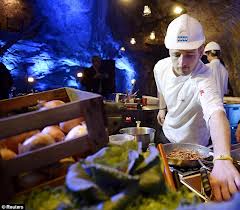 THEY SHOVEL THE
FOOD AT YOU!
THEY SHOVEL THE
FOOD AT YOU!
Muru Pops Down (left),
a project that's part of World Design Capital Helsinki
2012, is a pop-up restaurant from a Helsinki
restaurant that takes place 262 feet underground in
the Tytyri Mine Museum. The dinner cost $161 and
was sold out during its run.
FOOD WRITING 101: FOOD IS NOT
PEOPLE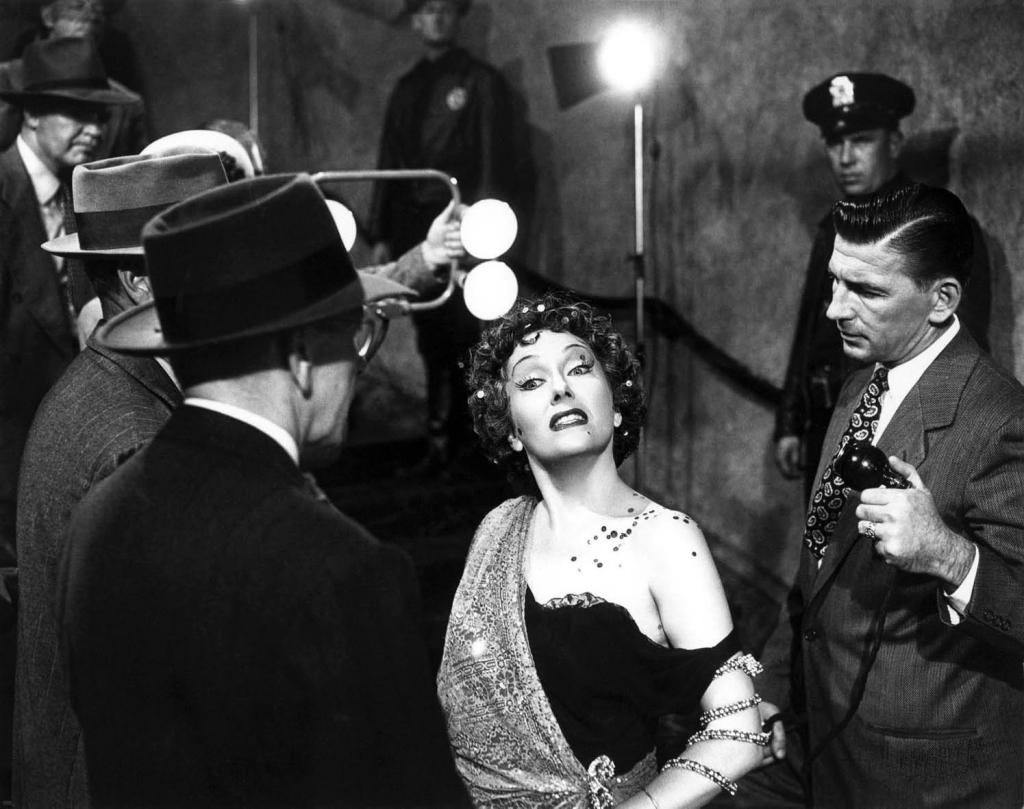
“By night, the place is packed with a stiffer
clientele—think blazers and silk dresses—whose
collective temperament is discordant with the
atmosphere of mealtime relaxation. Even the food looks
at ease—the breezy, colorful plating is ready for its
country-cookbook close-up.”—Sylvia Killingsworth, “Il
Buco Alimentari e Vineria,” The New Yorker
(9/17/12).
❖❖❖
Any of John Mariani's
books below may be ordered from amazon.com.
 |
My latest book, which just won the prize for best book from International Gourmand, written with Jim Heimann and Steven Heller, Menu Design in America, 1850-1985 ( Books), has just appeared, with nearly 1,000 beautiful, historic, hilarious, sometimes shocking menus dating back to before the Civil War and going through the Gilded Age, the Jazz Age, the Depression, the nightclub era of the 1930s and 1940s, the Space Age era, and the age when menus were a form of advertising in innovative explosions of color and modern design. The book is a chronicle of changing tastes and mores and says as much about America as about its food and drink.
“Luxuriating vicariously in the pleasures of this book. . . you can’t help but become hungry. . .for the food of course, but also for something more: the bygone days of our country’s splendidly rich and complex past. Epicureans of both good food and artful design will do well to make it their coffee table’s main course.”—Chip Kidd, Wall Street Journal.
“[The menus] reflect the amazing craftsmanship that many restaurants applied to their bills of fare, and suggest that today’s restaurateurs could learn a lot from their predecessors.”—Rebecca Marx, The Village Voice. |
"Eating Italian will never be the same after reading John Mariani's entertaining and savory gastronomical history of the cuisine of Italy and how it won over appetites worldwide. . . . This book is such a tasteful narrative that it will literally make you hungry for Italian food and arouse your appetite for gastronomical history."--Don Oldenburg, USA Today. "Italian
restaurants--some good, some glitzy--far
outnumber their French rivals. Many of
these establishments are zestfully described
in How Italian Food Conquered the World, an
entertaining and fact-filled chronicle by
food-and-wine correspondent John F.
Mariani."--Aram Bakshian Jr., Wall Street
Journal.
"Equal parts
history, sociology, gastronomy, and just
plain fun, How Italian Food Conquered the
World tells the captivating and delicious
story of the (let's face it) everybody's
favorite cuisine with clarity, verve and
more than one surprise."--Colman Andrews,
editorial director of The Daily
Meal.com. "A fantastic and fascinating
read, covering everything from the influence
of Venice's spice trade to the impact of
Italian immigrants in America and the
evolution of alta cucina. This book will
serve as a terrific resource to anyone
interested in the real story of Italian
food."--Mary Ann Esposito, host of PBS-TV's
Ciao
Italia. "John Mariani has written the
definitive history of how Italians won their
way into our hearts, minds, and
stomachs. It's a story of pleasure over
pomp and taste over technique."--Danny Meyer,
owner of NYC restaurants Union Square Cafe,
Gotham Bar & Grill, The Modern, and
Maialino.
|
 |
 |
 |
 |
 |
 |
 |
 |
 Everett Potter's Travel Report:
Everett Potter's Travel Report: 
 Eating Las Vegas
is the new on-line site for Virtual Gourmet
contributor John A. Curtas., who since 1995
has been commenting on the Las Vegas food
scene and reviewing restaurants for Nevada
Public Radio. He is also the
restaurant critic for KLAS TV, Channel 8 in
Las Vegas, and his past reviews can be
accessed at KNPR.org.
Click on the logo below to go directly to
his site.
Eating Las Vegas
is the new on-line site for Virtual Gourmet
contributor John A. Curtas., who since 1995
has been commenting on the Las Vegas food
scene and reviewing restaurants for Nevada
Public Radio. He is also the
restaurant critic for KLAS TV, Channel 8 in
Las Vegas, and his past reviews can be
accessed at KNPR.org.
Click on the logo below to go directly to
his site.

Tennis Resorts Online: A Critical Guide to the World's Best Tennis Resorts and Tennis Camps, published by ROGER COX, who has spent more than two decades writing about tennis travel, including a 17-year stretch for Tennis magazine. He has also written for Arthur Frommer's Budget Travel, New York Magazine, Travel & Leisure, Esquire, Money, USTA Magazine, Men's Journal, and The Robb Report. He has authored two books-The World's Best Tennis Vacations (Stephen Greene Press/Viking Penguin, 1990) and The Best Places to Stay in the Rockies (Houghton Mifflin, 1992 & 1994), and the Melbourne (Australia) chapter to the Wall Street Journal Business Guide to Cities of the Pacific Rim (Fodor's Travel Guides, 1991).


MARIANI'S VIRTUAL GOURMET
NEWSLETTER is published weekly. Editor/Publisher: John
Mariani.
Contributing Writers: Christopher Mariani, Robert Mariani,
John A. Curtas, Edward Brivio, Mort Hochstein,
Suzanne Wright, and Brian Freedman. Contributing
Photographers: Galina Stepanoff-Dargery,
Bobby Pirillo. Technical Advisor: Gerry McLoughlin.
© copyright John Mariani 2012
